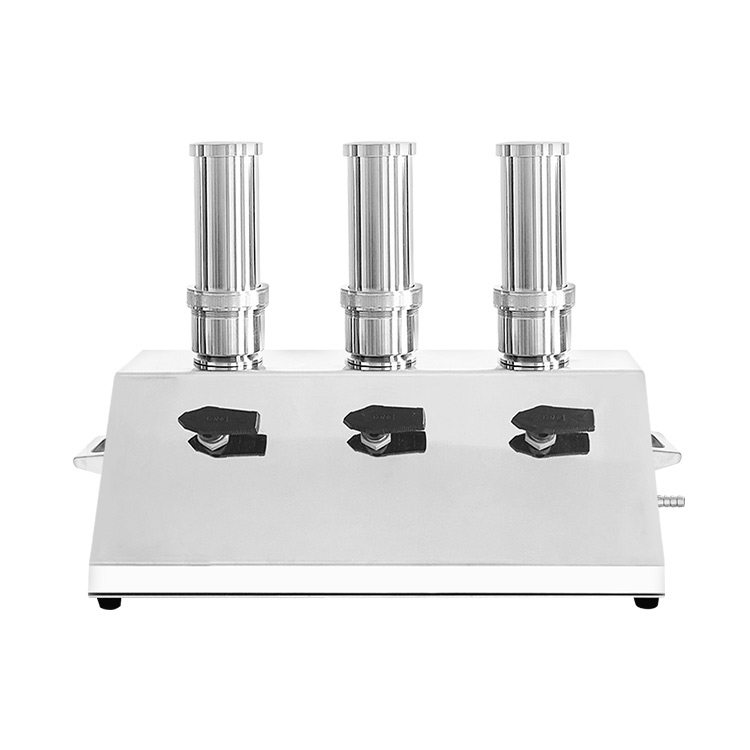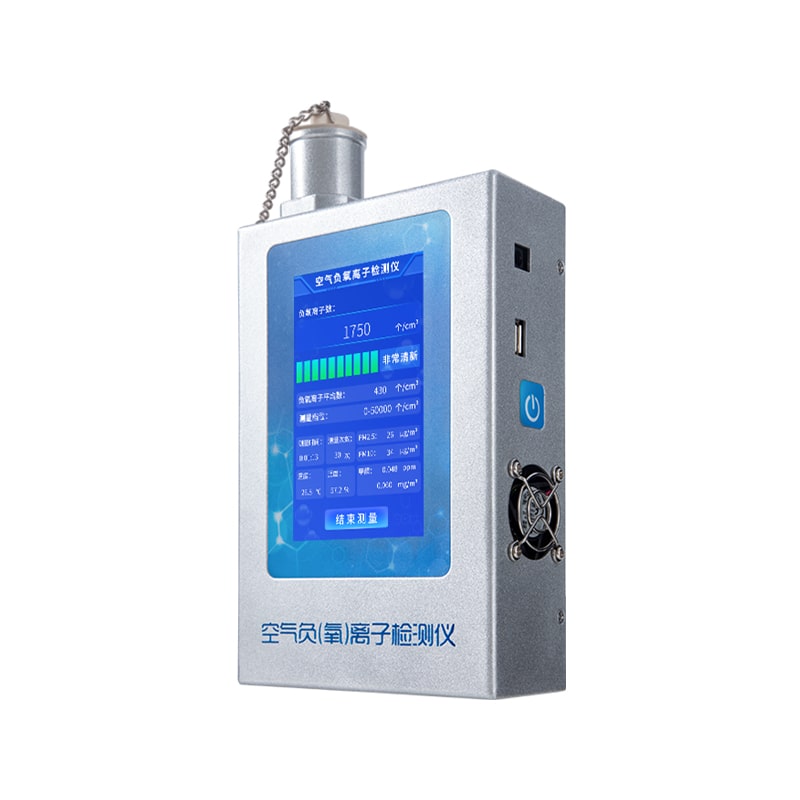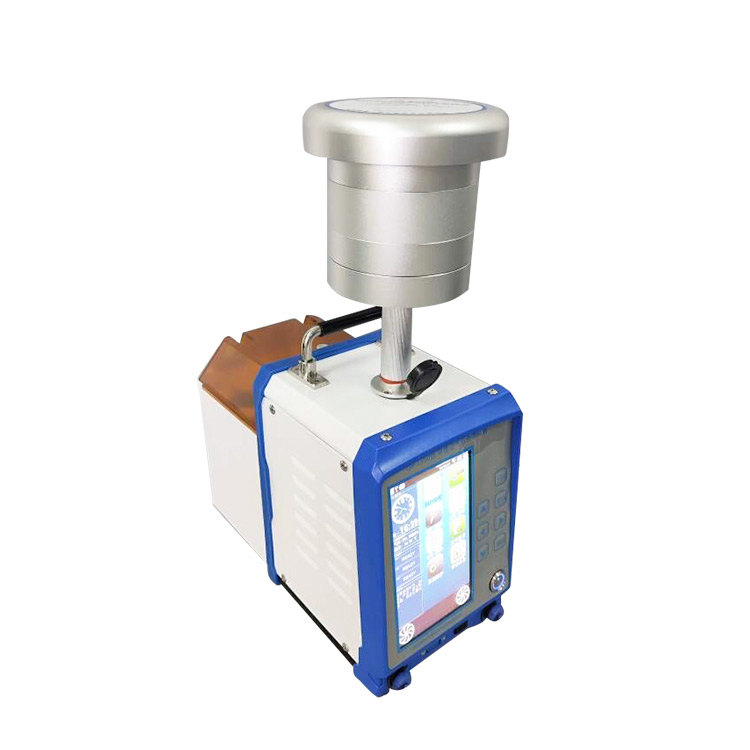Product Center
- Negative oxygen ion detector
- Dust particle counter
- Air Bacteria Sampler
- Biological aerosol detector
- Infrared CO/CO2 analyzer
- Microbial Air Monitoring Systems
- Microbial aerosol concentrator
- Environmental air comprehensive sampler
- Mercury meter
- Trace sulfur analyzer
- Bacterial Collector
- Quantitative sampling robot
- Emanometer
- Microbial limit tester
Bioaerosol Detector with ATP Bioluminescence Technology for Rapid Airborne Microbe Detection
Source:Hengmei Environmental Sanitation Instrument Network Update time:2025-09-24 16:42:32
In the fields of public health, environmental monitoring, and biosafety, bioaerosol detectors have become a key tool for preventing disease transmission and ensuring environmental safety. Microbial aerosols in the air, such as bacteria, fungi, viruses, etc., are important vectors for the transmission of many infectious diseases and the main source of pollution in clean environments. Traditional microbial detection methods have drawbacks such as sampling and detection separation, long time consumption (usually requiring 24-48 hours of cultivation), and complex operation, which make it difficult to meet the real-time requirements of modern biosafety monitoring.
The bioaerosol detector utilizes innovative ATP bioluminescence technology to achieve rapid quantitative detection of live microorganisms in the air, reducing detection time from "days" to "minutes" and providing strong technical support for environmental monitoring.

Technical principles
The instrument adopts the principle of firefly luminescence and achieves rapid detection through three major modules:
1. High traffic sampling system:
Dry wall cyclone solid gas separation technology, with a sampling efficiency of 92%;
Flow range of 10-750L/min, suitable for different scene requirements;
Integrated sampling head to avoid cross contamination.
2. Rapid fluorescence detection module:
MPPT silicon photomultiplier tube detector, signal-to-noise ratio>1000:1;
Detection range 0-999999 RLUs, covering all microbial concentrations;
Temperature compensation algorithm, stable operation in an environment of 18-45 ℃.
3. Intelligent control system:
Android 7.1 system, RAM 2G+ROM 16G storage;
Support daily scheduled multi time detection and automatic uploading of data to the cloud platform;
Dual use of AC and DC, with a battery life of ≥ 10 hours.
Typical application scenarios
Hospital infection control: Automatic detection every 2 hours in the operating room, and automatic alarm for exceeding the standard;
Food processing: Real time monitoring in the dairy workshop to ensure that the total bacterial count is less than 100 CFU/m ³;
Biosafety: P3 laboratory leak detection, response time<5 minutes;
Public places: Daily air quality inspection at subway stations to ensure passenger health.
In depth analysis of industry pain points
1. The traditional detection mode has four fundamental flaws:
Time lag: Data lag in cultivation methods leads to pollution diffusion;
Space limitations: Grassroots units lack detection capabilities and rely on experience to make judgments;
High cost: The cost of a single test exceeds 300 yuan, which is a heavy burden;
Human error: Tablet counting requires high proficiency, and grassroots quality inspection capabilities are insufficient.
2. The bioaerosol detector completely solves these problems through the following innovative designs:
Fully automatic detection: sampling detection upload integration, no need for manual intervention;
GPS positioning printing: automatically record the coordinates of sampling points and construct pollution maps;
Dual mode detection: supports dual validation of ATP fluorescence method and microbial culture method;
Thermal printer: on-site inspection report with QR code, supporting scanning for traceability.
The bioaerosol detector provides a fast and accurate solution for air microbial monitoring through innovative ATP bioluminescence technology and intelligent system design. This instrument has significant advantages in detection speed, ease of operation, and data reliability, and is driving the transformation of bioaerosol monitoring from laboratory lag analysis to real-time on-site monitoring.
Article address:https://www.environmentinstrum.com/company/53.html
- Related products
- Related articles
-
11-14 2025
Hengmei Intelligent Bioaerosol Detector Product Knowledge Graph White Paper
1. Introduction•Document Version: 1.0•Compiling Unit: Shandong Hengmei Electronic Technology Co., Lt···...
-
09-09 2025
Negative Oxygen Ion Detector: Precision and Portability Combined
In today's world where air quality is increasingly emphasized, negative oxygen ions, known as &q···...
-
09-24 2025
Bioaerosol Detector with ATP Bioluminescence Technology for Rapid Airborne Microbe Detection
In the fields of public health, environmental monitoring, and biosafety, bioaerosol detectors have b···...
-
07-31 2025
Analysis and Application of Handheld Laser Particle Counter Technology
In the field of modern industry and technology, air cleanliness is no longer an optional standard, b···...













